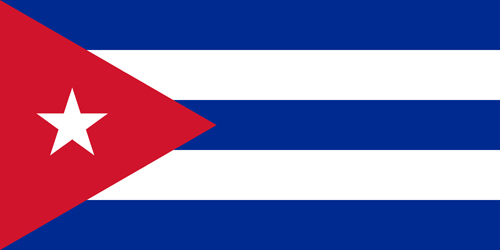Explore
Caucasus

The former Soviet states of Armenia, Georgia and Azerbaijan make up the Caucasus region. It stretches between the Black Sea to the west, the Caspian Sea to the east and sits south of the Russian republics of Chechnya, North Ossetia and Dagestan. The region was ‘recreated’ after the breakup of the Soviet Union in 1991 and is one of the most linguistically and culturally diverse regions in the world. The Caucasus is a melting pot of traditions, nationalities, cuisine, customs and religions where visitors can explore magnificent mountain ranges, monuments of ancient civilizations, hidden monasteries, medieval towns, historic mosques, rural markets and caravanserai, all mingled with utilitarian Soviet factories and tower blocks. The Caucasus is where Europe meets Asia and Christianity meets Islam.
If possible, Armenia, Georgia and Azerbaijan are best visited as part of the same trip to better appreciate the commonality and contrasts in the landscape, cuisine, cultures and religion. Whilst travelling around involves a lot of time on the road with few motorways, the Caucasus is relatively unexplored and tourists are genuinely welcomed as guests by locals. However, tread carefully if exploring the regions of North Ossetia, South Ossetia, Chechnya, Ingushetia, Dagestan and Nagorno-Karabakh as they still remain disputed territories.
Armenia
A land of stunning natural scenery, ancient culture and rich history, Armenia is still relatively unexplored and largely untouched by tourism. Often overshadowed by its larger neighbours, Georgia, Turkey, Iran and Azerbaijan, it is a small landlocked country situated on the ancient route of the Silk Road.

Various cultural influences and political powers have played a part in shaping this nation from the Persians, Ottomans and Russians. Armenia was the first country to adopt Christianity as its state religion and is home to some of the world’s oldest Christian monasteries and churches, many UNESCO World Heritage Listed.

A testament to the country’s strong Christian faith, the most prominent of these ancient buildings have been carefully restored and maintained including Tatev, Geghard, Sevanavank with its limestone green cross on the shore of Lake Sevan, Echimiadzin, considered the oldest cathedral in the world, Khor Virap, framed against the majestic snow-capped peaks of Mount Ararat across the Turkish border, and the pink walled Odzun Church in northern Armenia. The capital city of Yerevan is the usual starting point for any trip, and it has an interesting selection of monuments, Soviet-era buildings and museums, including the Museum of Ancient Manuscripts, National Art Gallery and the Armenian Genocide Memorial and Museum.

Georgia
Georgia is a country of dramatic contrasts, from its Black Sea coastline, vineyards showcasing its 8,000-year history of viticulture, to ancient hilltop churches, monasteries, Roman fortresses and cave cities, many dating back to the 5th century. Its rich and ancient culture has evolved from medieval European, Byzantine and Persian influences and it was one of the first countries to embrace Christianity.

Located directly below Russia, Georgia is a mountainous country on the southern slopes of the Caucasus mountains with a landscape that is also ideal for hiking, riding and rafting. Once considered the vineyard of the former USSR, Georgia is renowned for its wine, cuisine and generous hospitality, with Georgians believing that guests are a blessing. The capital Tbilisi, a five hour drive from Yerevan, with its cobbled streets offers an interesting mix of architectural styles featuring the 4th century Narikala Fortress, the 5th century Metechi Church, Siony Cathedral, Anchiskhati Basilica and the State Museum of Georgia.

To the east of Tbilisi, the holy city of Mtskheta is often referred to as the spiritual heart of the country. It is home to the Cathedral of Svetitskhoveli and the 6th century Jvari Monastery. To the south-east of Tiblisi is the fascinating Davit Gareja monastery complex, featuring 22 monasteries carved into the rock face. Other areas worth exploring include the mountainous areas of Kazbegi and Svaneti, the wine producing region of Kakheti, the Black Sea coast and Gori, the birthplace of Stalin (en route to Gelati Monastery and Khertvisi Fortress). Georgia is also home to one of the region’s fascinating self-declared independent breakaway states, Abkhazia, which is untouched by western tourism.

Azerbaijan
Situated between Iran and Russia, at the crossroads of Europe and Asia, Azerbaijan was an important stop on the Silk Road trading route for centuries. Baku, sitting on the edge of the Caspian Sea is the world’s lowest lying capital city and the largest below sea level. Azerbaijan’s economy exploded following vast oil and natural gas exploration, and as a consequence Baku’s skyline is more extravagant and high-rise than its Caucasian neighbours. In contrast, the UNESCO World Heritage Listed Old City provides an insight into the streets, temples and caravanserais of the past and in the traditional villages of the Caucasus Mountains such as Lahic, locals continue to live as they did hundreds of years ago with traditional art forms such as carpet weaving continuing to thrive.

To understand the country’s ancient past, visitors can view the UNESCO World Heritage Listed Stone Age engravings at Gobustan National Park, home to the world’s most extraordinary display of ancient petroglyphs, and in the nearby Absheron Peninsula lies the permanently alight natural gas ‘flaming mountain’ of Yanardag and the fire worshippers’ Ateshgah temple. Known as the Land of Fire (“azer” meaning fire), Azerbaijan whilst more influenced by the Ottoman and Persian Empires than Georgia and Armenia, remains a melting pot of different people and religions where the language spoken in one highland village may be very different to that of the neighbouring village.

COUNTRY COUNTER
Fast Facts on countries the CENTUM+ team have explored so far ...





















